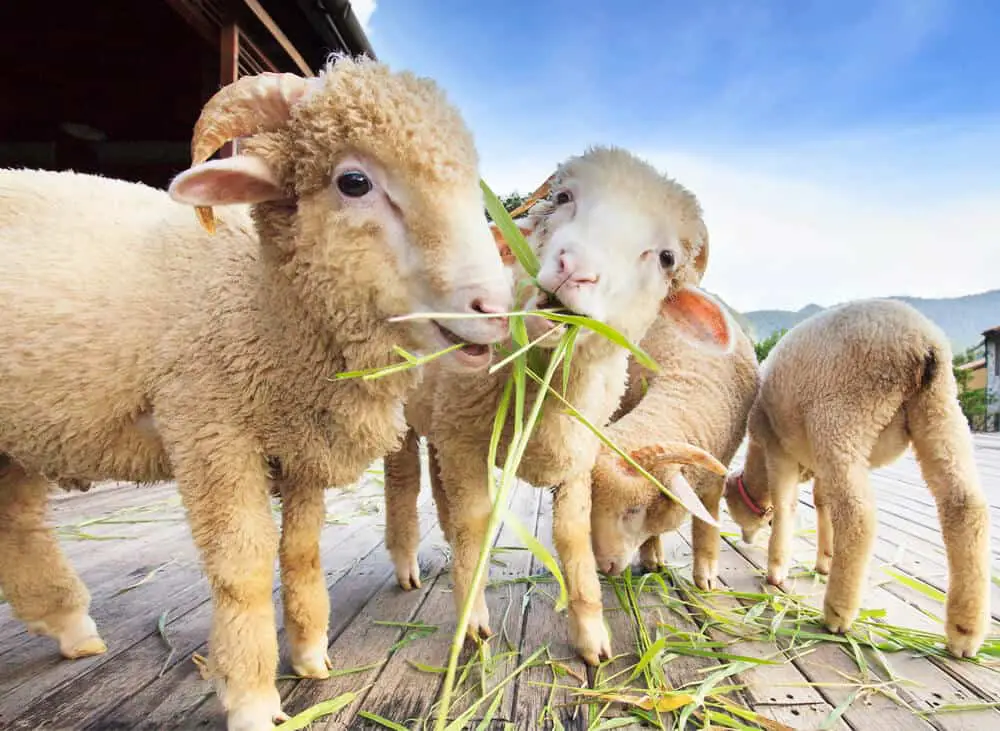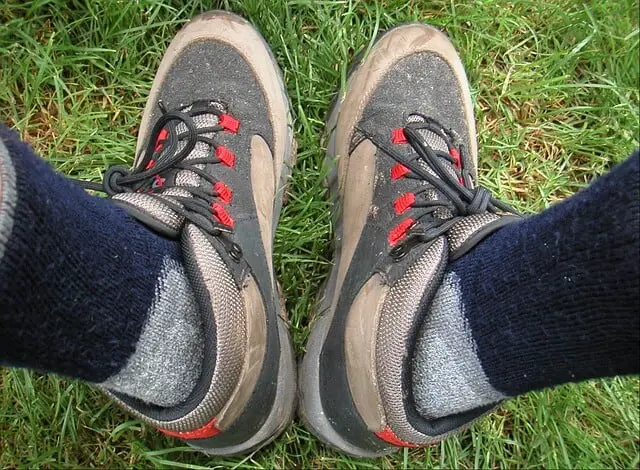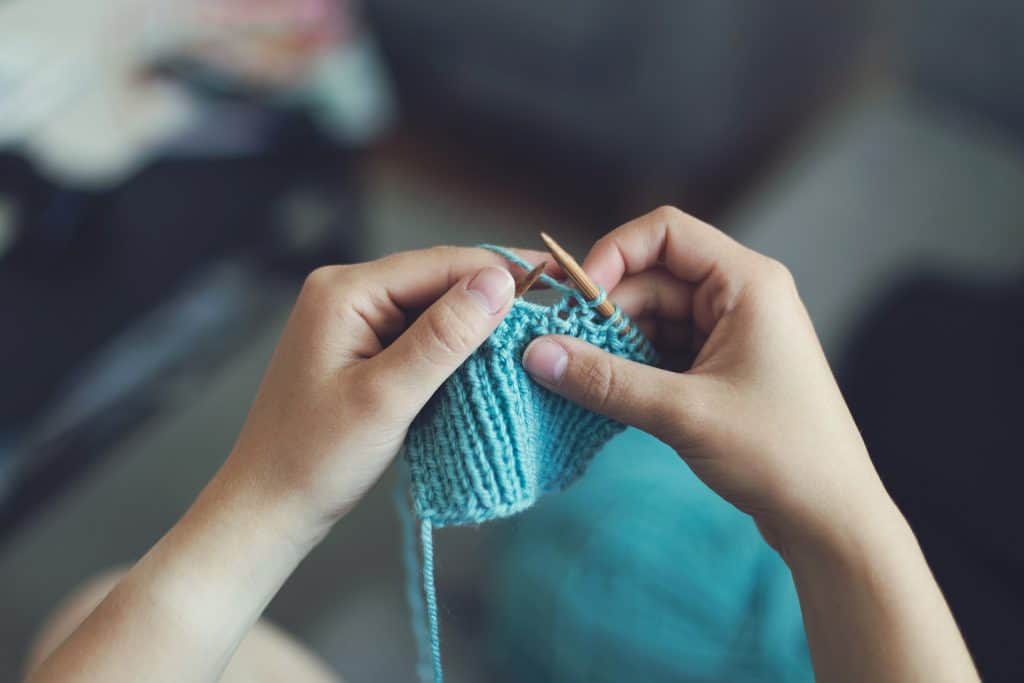How much do you really know about merino wool? When I first started hiking I noticed it was one popular material used in a lot of hiking gear, which lead to me doing some research into what it is before I considered buying it.
Here are some of the questions that I originally thought about and will answer throughout this article:
- how soft is merino wool compared to other wools?
- will it make me scratch and how itchy is the material?
- is merino wool warm and can I wear it in hot weather?
Keep on reading to find an easy answer for your questions about merino wool!
Is Merino Wool Soft?
Merino wool is made of thin and flexible fibers that create a soft and comfortable feel. The diameter of fibers is the main factor for how soft a material is, and wool from Merino sheep is the finest option available. Many companies use Merino wool for their Winter apparel since it provides a good combination of soft and warm for the colder climates.
There are more benefits than just being soft for this amazing wool type. Here are just a few of the reasons Merino Wool is so popular.
- Odor Neutralizing
- Moisture Regulating
- Temperature Regulating
- Soft & Easy to Care For
- Sustainable Material
Apart from being soft, Merino wool is also an excellent insulator. It keeps you really warm as the fibers have a natural crimp that traps body heat for longer. At the same time, it keeps one feeling dry and sweat-free because of its porous nature.
It even has anti-bacterial properties which make it odor-resistant which can be a great thing when out hiking for hours at a time. This wool type is also suitable for those who have allergies.
What Makes Merino Wool Soft?
Many people are increasingly interested in Merino wool these days. This is wool that comes from the natural fiber of the Merino sheep, originally belonging to Spain. This sheep is also commonly found in Australia and New Zealand.
Naturally, the sheep are adapted to surviving in the most extreme weather and freezing temperatures. Thus, their fleece is also extremely warm. This wool is actually quite different than regular wool. One issue that most people have with traditional wool is that it can be quite itchy and rough at times. Despite giving ample warmth, it can be uncomfortable to wear at times.
You can expect this wool to be so soft that it even flows and bends seamlessly with every body movement giving an utmost comfortable feel. This fiber has much more elasticity and fineness than many other wool types.
It is also a luxurious wool choice due to its beautiful texture and softness. It does not itch or irritate the skin, neither does it feel too heavy.
Is Merino Wool Itchy?
Merino wool has thin and flexible fibers which makes them much less itchy than other wool materials. Thin fibers create a soft and lightweight feel that are able to bend comfortably when pressed against your skin. Larger fibers are less flexible and have an itchy feeling when trying to bend into shape.
As it turns out, not all wool is created equal. Many times manufacturers will use cheaper wool as a way to cut the price of their products. Unfortunately, what they make up in cost they sacrifice in quality or comfort.
Cheaper wools are typically made of thicker fibers, which may feel itchy or irritable against the skin. The diameter of a thread of wool is measured in microns or one-millionth of a meter. The thicker the micron, the coarser the wool. The micron count for Merino wool is thus considered the finest textured wool available.
Merino wool’s cool factor, along with the softness of its fibers, makes it an ideal fabric choice for base layers that lay close to the body. Another benefit of wool is its natural ability to draw moisture away from the skin, also known as wicking.
All of these factors combined make Merino wool an excellent fabric choice when you need your clothing to perform while helping to keep you comfortable.
If it’s base layers or even a pair of wool shoes that you’re looking for, you can’t go wrong with items made with Merino wool.
Here’s How To Make Merino Wool Less Itchy
Even though merino wool is not usually itchy, wool affects everybody differently. If you’ve tried on your wool garment and are still having issues with itchiness, there are some steps that can be taken to make the material softer.
- Turn the garment inside out
- Combine a tablespoon of white vinegar with cold water and soak the material for 15 minutes
- Drain the water and massage a small amount of hair conditioner into the wool fibers
- After letting it sit for 30 minutes, thoroughly rinse out the conditioner with cold water
- Lay the material out flat on a towel to air dry
- Once it’s completely dry, fold it and place it in a ziplock bag
- Leave the material in the freezer overnight
This process works by first softening the fibers with the vinegar and conditioner, and then freezing the shorter fibers so that they don’t stick out and cause itching. After following the above steps you should be able to notice a difference in how prickly or itchy the material feels.
Is Merino Wool Warm?
The fibers in Merino Wool provide an insulating base layer that traps heat within the material. These ultra-fine, soft, and flexible wool fibers are efficient in containing the body’s natural heat in any temperature or condition. The material is lightweight and soft which is one reason it’s commonly used in products like socks and shirts.
There are natural components in the material that all work together to provide a soft and warm feeling when wearing the wool. The fibers within the fleece are excellent at absorbing your body’s natural warmth within the fiber, which ends up giving off heat itself. Rather than trapping heat, it acts as a natural insulator.
The fibers within the wool have a certain frizz to them as they intertwine together. The result is that the wool holds on to dead air like a net and is able to insulate the body from the cold, and act as a buffer against the chilly wind.
In other words, merino wool is almost like having an extra layer of skin, holding in warmth and warding off the chill.
How Does Merino Wool Stay Warm?
By wicking away moisture, merino wool removes the sweat from your body which is an outstanding feature for keeping warm. Sweat is your body’s natural defense to being too warm, prompting your skin to release moisture in an effort to cool itself.
However, by wicking this moisture away, you stay warmer, as the wool does not trap your sweat and wetly cling to your skin, thus making you colder.
Instead, these fibers wick your moisture and then allow them to evaporate on the outside of the fabric, away from your skin. Amazingly, this same property is what makes merino wool also ideal to wear in the summer as well.
Wool breathes, and as a result, is able to regulate your temperature whether it’s hot or cold. The fact merino wool can breathe and wicks away moisture means it also wicks away unwanted and unpleasant odors as well.





